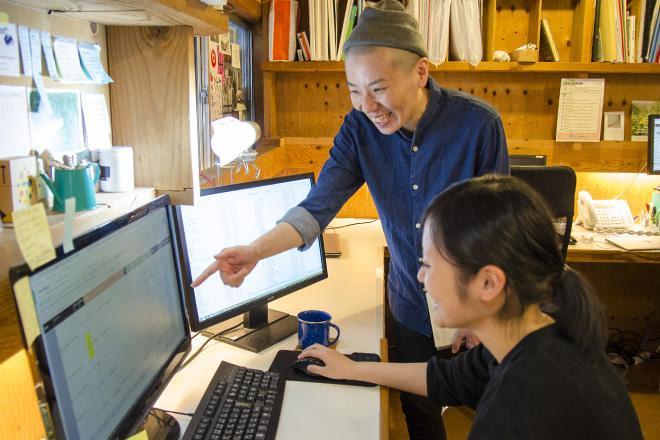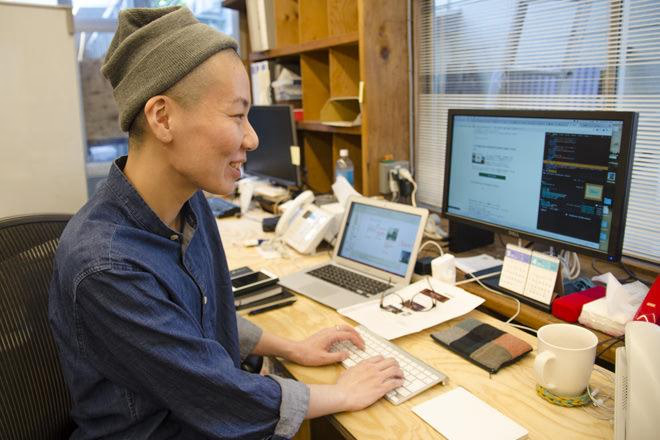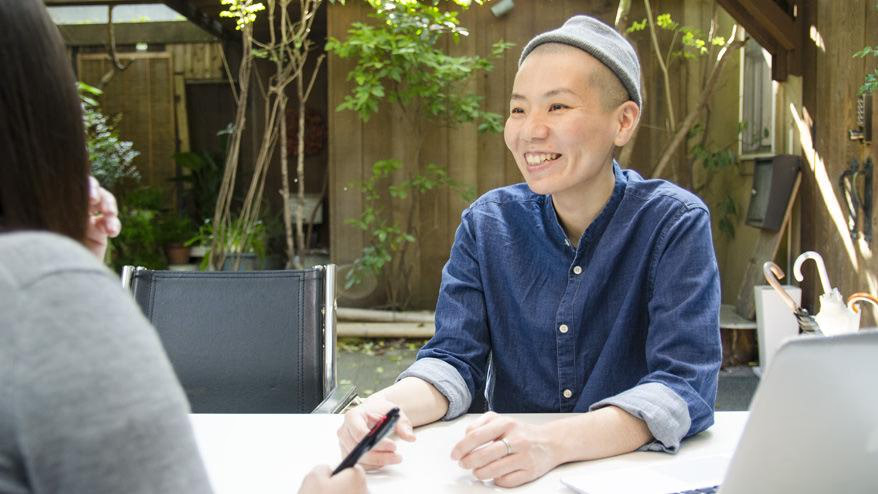Hello. I'm Wada from the direction team.
I joined Monosus as a director after learning coding at Kamiyama Monosus Juku, but to be honest, I didn't have a clear image of what a director's job entailed, because my previous job was as a junior high school teacher.
This year, I was newly assigned to the direction team, which gave me a new perspective on the job of a director, and in the process, I realized that there are some similarities between the job of a director and that of a teacher.
I would like to write about that today.
What do teachers and directors have in common?
About three months after I joined the company, I was put in charge of a project to renew a certain website. It was a large-scale project that required collaboration between Monosus in Yoyogi and Monosus in Thailand, and I was involved as the production director on the Japanese side.
In this project, under the supervision of project manager Kamii , I learned about design, quality control, and progress management of the production, which are all extremely important in production.
My job was to create templates that would serve as coding models for mass-produced pages, and once the templates were created, I would stand between the client and the producers, communicating instructions and managing the production progress.As I worked on the project, I realized there were similarities between the work of a director and that of a teacher.
These were: "Communicating things to people in different positions" and "How you interact with people determines the quality of the output."
Commonality 1: Communicating with people in different positions
At school, teachers teach students what to learn in their subjects.
I taught social studies and Japanese, and in order to convey something that you already understand to someone who doesn't understand anything, you need to break it down and convey it in words that the other person can understand. Even if you are conveying the same content, each student's level of understanding is different, so you need to follow up accordingly.
When I was a teacher, a senior teacher told me, "You can teach better at things you're not good at." When it comes to things you're good at, you don't know what's hard to understand or where people have trouble, so you tend to think about things and proceed with your lessons assuming that everyone else understands them. However, when you teach others something you're not good at, you study to deepen your understanding, because you're not good at it yourself, and then you create lessons thinking about how to convey it in a way that's easy to understand for people who don't understand.
What if this is a case?
Your audience will change from students to clients or in-house developers. You will need to tailor your explanations to suit each person.
First, when speaking to a client, I try to understand their intentions, propose concrete measures, and confirm whether my understanding matches the client's. However, even if the client gives me instructions, if they deviate from the rules we had initially decided on or I have any doubts, I immediately check and continue to communicate with them as I go along.
It is important that we act with consideration for how we can all work together as smoothly as possible.

Next, we consider how to best communicate the client's instructions to our in-house developers so that they can create their work more easily. In some cases, we use tools such as PowerPoint to recreate the look of the website and make it easier to understand.
The thing that I found most difficult about directing was how to communicate to the producers when the client made sudden corrections or additional requests.
A producer does not only work on one project. There are times when we need them to do unplanned work while working on multiple projects at the same time, so we go to them with a feeling of apology, but also with the feeling that we have no choice but to ask them. In those cases, we try to prepare materials and make them easy to understand in a short time so as not to burden the producer as much as possible.
Common point 2: How you interact with others determines the quality of your output
At school, the output of each student changes depending on how the teacher interacts with the student. How can students become able to do things they can't do before? This is due to differences in individual ability, and even the way they perceive things is different, so each student needs to be dealt with individually.
For example, summer homework always requires writing an essay, but many students are not good at writing essays, and it is not uncommon for them to not even turn it in. Although it would be possible to leave it as it is and have it reflected in their grades, I thought that even students who are not good at writing essays might be able to write at least a little if they knew how to think and how to start writing, so I have given them supplementary lessons after school.
At first, the students said they didn't have anything they wanted to write and couldn't write anything, but I listened to them, picked out words one by one that could be used as material for compositions, and connected them.... After going through this process, the students wrote compositions. It wasn't a good composition by any means, but the faces of the students who hadn't been able to write anything at all (and didn't even know how to write) were beaming. I remember being very happy to see their faces.
In projects, too, when you want to communicate what you want to say or what you want others to do in a way that they can understand, the way you interact with them is important. I think the way you say things is also very important. Even if you think you have communicated something, sometimes it doesn't get through to the other person properly. In those cases, you need to find a way to interact with them that suits them.
For example, you need to communicate your intentions in detail by reading the materials together and explaining what you are looking for. I think that by communicating in detail, you can convey your intentions to the creators.
I think whether or not the creator is comfortable working with you depends on how you interact with them, such as the time of day you talk and how you speak to them.

The director is a "guide"
In the case of a project, the client, the producer, and the director all work together to advance a single project. This is also true in the relationship between a teacher and a student, but if the student's desire to be able to write compositions and the teacher's desire for the student to be able to write compositions do not match, things will not go well.
I think the role of a director is to be a "guide for moving a project forward." A person who shows the direction, such as how the project should proceed and what is the best way to proceed for those involved in the project. The scope and work involved vary depending on the project, but I feel that the role of a director is to grasp the overall picture and make arrangements so that the client and our company can proceed with the work with mutual trust.
When you ask someone to do something or work on something together, how can you make it go smoothly? To do this, you need to be creative with how you communicate and interact with them, and it's also important to communicate with the people around you on a regular basis. I think that casual conversations on a daily basis are also important in cultivating the ability to interact with people. It may be a small thing, but as a director, I think it's one factor that helps things go smoothly when moving forward with a project.
The commonalities between teachers and directors, how to interact with people, how to communicate with others, how to interact with others - these may seem simple, but they are actually very difficult challenges. However, I would like to continue learning in the future to become a "guide = director" who can always think about and explore how to interact with people, while making full use of my experience as a teacher, and who can smoothly put into practice both production and direction.

